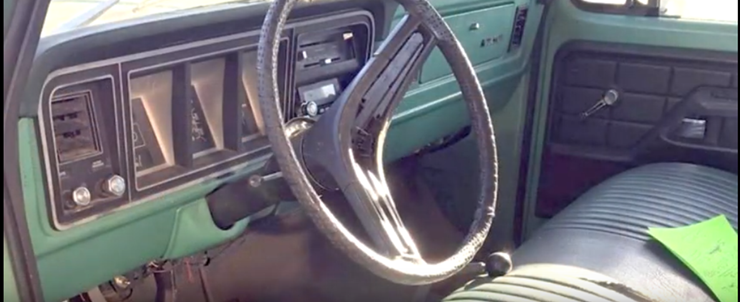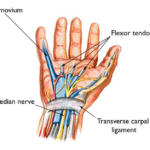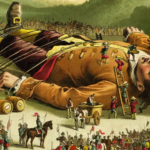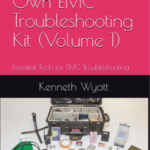Could a show dramatizing real engineering-project challenges have a chance?
It’s not news that the television schedule of shows is heavily loaded with shows focused on lawyers, police, and doctors, in addition to so-called “situation comedies” (sitcoms). Let’s be honest: they have drama, personalities, action, and conflict, which are among the elements that supposedly make for “good TV” (whether they actually do so is another story, of course). There seems to be no end to the script ideas and variations that writers can conjure with these scenarios.
But as for engineering-centric shows on TV: hardly any. Some might consider “McGyver” such a show, but I’d don’t see that, as his challenges and innovative solutions are due to unique and artificially constrained situations. Another very popular show, “The Big Bang Theory,” was really about students and physicists, and it was mostly about their geeky personalities and interactions rather than their projects, so I’ll rule that out as well.
The few shows with any engineering content or focus seem to be mostly about hackers who can break any encryption wall in a few seconds, or similar keyboard wizardry. There are a few shows about engineers, the problems they encounter, and then solve or workaround. One of the standout ones was “Mission Impossible”, which ran from 1966 to 1973 (still in reruns!), but that’s ancient history.
I know it’s easy to complain and criticize, so instead, I’ll offer up a positive suggestion for a TV show, which I’ll call “The Law of Unanticipated Consequences.” [As a side effect, that name might attract some fans of legal shows, although it is not one.] The idea would be to dramatize some apparently modest change to a design spec or the design itself, then show the ripple effect—mostly negative—that these can have. This would not be a bland albeit well-done documentary; instead, it would be a scripted show with characters, action, conflict… you get the idea.
Eventually, the show’s charter could go beyond how making small changes or fixing what seem to be modest problems can snowball into big headaches for the design, test, and production teams. It could be expanded to include extreme design challenges and the tradeoffs encountered in meeting them.
This would be different than engineering-disaster shows, which look at poor designs or implementations and the eventual fix. For that, a well-known example is the Hubble Space Telescope, which launched with an improperly calibrated mirror and lens assembly and provided useless fuzzy images (Figure 1). But this was not a design flaw: it was negligence, sloppiness, and lack of quality checking. Yes, it took a long time to figure out what was wrong and why, devise an innovative fix, and then have astronauts from the Space Shuttle install the fix. But it was not a case of a modest design request becoming a major headache.

A better and more relatable example comes from my colleague Paul Rako. He’s a highly experienced EE with significant mechanical know-how plus practical industrial and personal hands-on expertise. His YouTube video “Engineering disaster: The Ford 1980 pickup instrument panel” discusses one of the various major engineering mess-ups with which he was involved at Ford Motor Company. It covers the sequence of problems that accrued as they attempted to transition the instrument panel from steel with plastic clusters (Figure 2) to an all-plastic design, an idea driven partially by presumed cost savings but mostly by the stylists’ misguided concept of providing a better “esthetic” appeal.

In the video, Paul describes how they incurred a series of cost increases, fabrication penalties, quality problems, reliability/durability issues, major safety concerns, and electrical performance considerations that wiped out any presumed savings and seriously affected production. It’s a sad yet very revealing tale that perfectly captures what happens when the law of unanticipated consequences meets the ripple effect (also known as the “butterfly effect” where a localized change in a complex system can have large effects elsewhere). BTW, Paul has another video on the Ford 1980 wiper motor design/implementation disaster that’s worth seeing.
My idea is to develop a dramatization of such engineering stories, where small design or production changes result in major headaches, and how they are fixed (or maybe not). Or perhaps it could look at meeting design objectives which look impossible at first. It could have the usual cast of characters: the management/bean counters who causally suggest or insist on changes to save money or make things look snazzier, maybe a lawyer or two who looks at liability concerns before and after, the engineering team that has to grapple with the consequences and grind their way through to a solution under time pressure, perhaps a hero or two who come up with an “aha” solution as well, all mixed in with production and schedule considerations.
Is this going to happen? I guess the answer is “never say never”, – but hey, we can always dream!
EE World Related Content
The Hubble Space Telescope: Part 4 (has links to parts 1 through 3 as well)
Assemble your EMC troubleshooting kit and fix problems
Signal integrity can’t kill the breakout box







Leave a Reply
You must be logged in to post a comment.